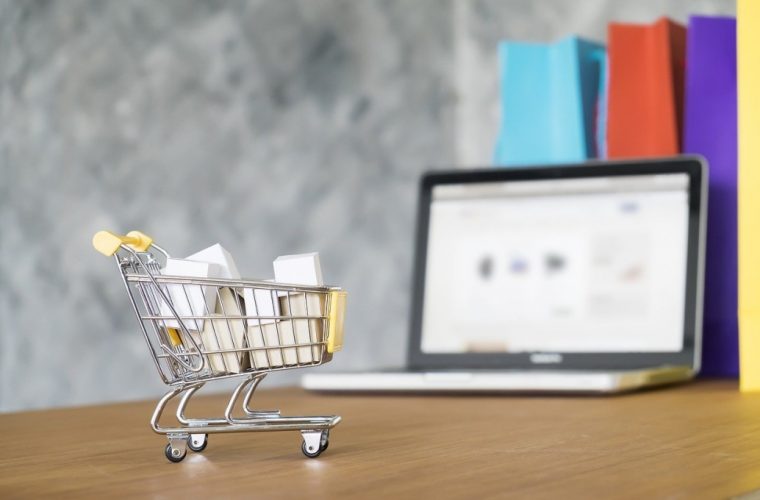
Try-Before-You-Buy: Keeping Up With Amazon Wardrobe
By Derek O’Carroll, CEO, Brightpearl.
Amazon launched its try-before-you-buy (TBYB) service last year, a program which allows shoppers to order and try clothes without paying first. Initially an invite-only Prime Wardrobe move, Amazon is now extending the service to all prime members.
Some see this as a shot across the bow to similar TBYB service providers, including Trunk Club, Stitch Fix, Warby Parker, and ASOS, and it’s certainly heating up the returns battleground.
Returns are a core part of the online retail proposition. Retailers understand that they must accept a higher rate of returns as a trade-off for providing customers with the confidence to buy items unseen. We recently spoke to hundreds of retailers to produce a report into the impact of returns and found that return rates can be as high as 30% or more for mid-sized retail brands, compared to an average of 9% for the high street. More than half of retailers’ margins are being squeezed by returns – with 70% fearing TBYB will escalate the problem.
We also canvassed the opinions of thousands of consumers; 25% of shoppers told us that they have bought multiple items with the intention of sending some back, regardless of whether ‘try before you buy’ is available or not. Arguably, this behavior is set to become the norm – a full 50% of 18 to 24 year olds admit to buying multiple items with the intention of returning some.
Firms like Amazon, Stitch Fix and others are now attempting to rationalize the tendency of ecommerce shoppers to order more than they intend to keep with TBYB services becoming increasingly popularized.
The appeal of TBYB
There is no doubt that try-before-you-buy is an attractive offer for consumers, and retailers may covet the incremental sales and goodwill that it generates. Our research found three quarters of people would buy more items if offered a try-before-you-buy option, with shoppers ordering on average four extra items each month.
Two-thirds of Prime members have shopped for clothing or footwear via Amazon Wardrobe, and with the e-tailer extending its TBYB offer, it’s reasonable to assume that a significant portion of Prime members will use pay later options. For fashion retailers to keep up with the juggernaut that is Amazon, they will have to consider launching similar try-before-you-buy services.
It’s also reasonable to expect Amazon will, at some point, extend TBYB beyond fashion, and that’s something retail brands will need to take heed of. TBYB options are increasing in other sectors, with online businesses including Casper Mattresses and GhD launching similar services. This is no surprise, as almost one-fifth of shoppers across all age ranges say they would buy more items per month if ‘try before you buy’ was an option.
It’s no surprise then thata quarter of retailers will be offering some form of ‘try before you buy’ service by 2019.
The Returns Tsunami
Our study found that alongside the rapid rate of TBYB adoption over the coming year, the cost of returns is set to triple as a result – Americans already return more than $260 billion in goods each year, and this figure could skyrocket to $780bn due to the complexities of TBYB returns.
Alongside that, 87% of shoppers would return up to seven purchases a month made through TBYB, with 85% still expecting retailers to provide free returns. TBYB’s impact on retail margins could then be disastrous if not managed carefully. Concerningly, retailers simply aren’t prepared to manage the rising cost of returns. Almost two thirds of retailers are not deploying technology solutions to process returns.
The introduction of TBYB services as a way to keep up with the big players, like ASOS, could have the unfortunate effect of overwhelming unprepared retailers – many of which are already reaching crisis point – with a huge ‘Returns Tsunami’ that may wipe out their profits.
Innovate to capitalize on TBYB
TBYB’s threat of cannibalizing margins means that the equation probably won’t work in most retailers favor, particularly without an investment in technology. Each year, the S&P 500 releases industry specific returns on equity and net margins, and each year the retail industry is among the least profitable. This is especially true for web-only retailers, which often see net margins as low as 0.5 to 3.5 percent.
While the big players like Amazon can afford to take the hit, operating TBYB on such low margins is simply not sustainable for small and mid-sized retail brands that don’t have the right framework and solutions in place to manage returns. The logistical and financial implications of handling, transport, admin and possible repacking of returned items could lead to significant problems.
But, the rapid rate of TBYB adoption means online retailers equally can’t afford to sit on the fence. The key for retailers is how to capitalize on these services without cannibalizing margins.
46.7% of retailers now say they charge for ecommerce returns in 2018, up from 39.1% the year before. Placing charges on returns is one option, but it’s at odds with the demands of customers for free returns. The onus should be on finding a solution that allows retailers to capitalize on TBYB without punishing consumers.
To truly capitalize, businesses must have effective warehouse systems in place which ensure end-to-end visibility over the returns process, ideally from a single platform. This allows retailers to glean better information around customer returns, for example information about items that have been kept or returned in the past, or enhanced insight into performance of various product categories – which can help improve accuracy with inventory forecasting.
Centralizing returns data means retailers can process and pre-authorize returns, giving customers their refund faster.
Investment in back office automation, for example, automated shipping, could also help to reduce the number of human errors as well as freeing warehouse workers from time consuming administrative tasks, enabling them to focus on getting products back out to market quicker.
Organizations that have the systems and technology in place to meet the TBYB challenge can gain a competitive advantage and strengthen customer loyalty. Those that don’t could end up seeing their profit washed away by the returns tsunami.
The full “Try Before You Buy: A Returns Tsunami for Retail” report is available for download on Brightpearl’s website here.
Derek O’Carroll is CEO of Brightpearl, a cloud-based ERP that works with retailers and wholesalers to implement back-office automation. He is responsible for overall company strategy and delivering on Brightpearl’s mission to automate retail.














